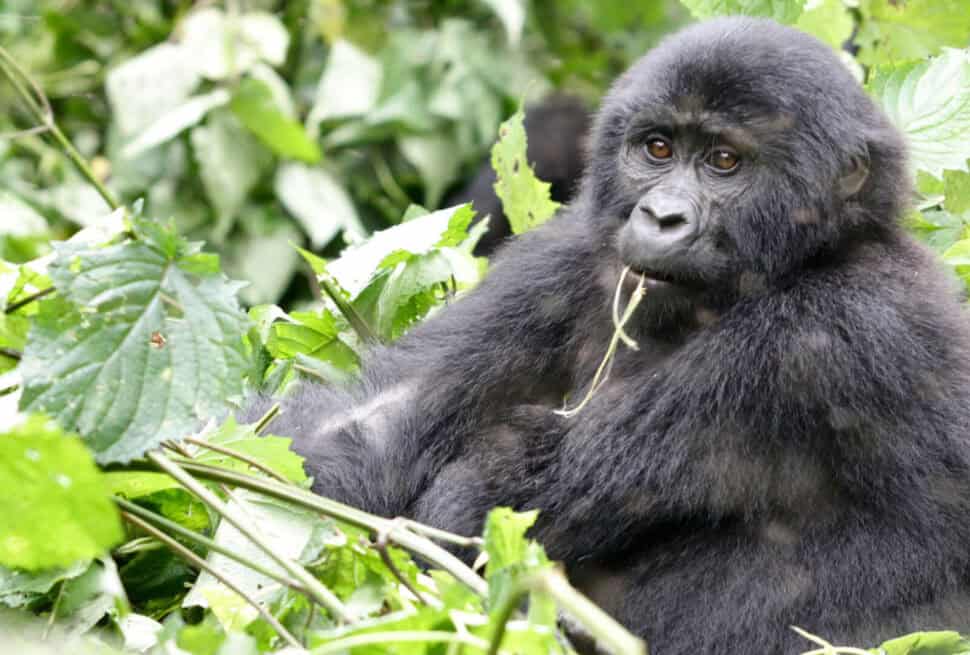Every year, one of nature’s most awe-inspiring spectacles unfolds across the sweeping savannas of East Africa — the Great Wildebeest Migration. Over two million wildebeest, joined by hundreds of thousands of zebras and gazelles, move in a powerful rhythm that defines life on the plains.
This annual journey through Kenya and Tanzania isn’t just a wildlife event. It’s a breathtaking story of survival, instinct, and endurance — a moving masterpiece that every nature lover should witness at least once in their lifetime.

What Is the Great Wildebeest Migration?
The Great Migration is the continuous, clockwise movement of wildebeest, zebras, and gazelles across the Serengeti-Masai Mara ecosystem. They follow the rains and fresh grass in search of survival, covering nearly 1,800 miles (2,900 km) each year.
The journey forms an endless cycle — not a start-and-end event — where millions of hooves thunder across open plains, rivers, and woodlands, all driven by nature’s rhythm. Along the way, the herds face predators, droughts, floods, and dramatic river crossings that test their strength and resilience.
This massive migration sustains countless species, supports fragile ecosystems, and remains one of the most moving demonstrations of life in the wild.
Why It Happens: The Call of the Rains
In East Africa, the rains dictate life. The wildebeest move with the seasons, following areas where grass is fresh and water is abundant.
From December to March, the herds gather in the southern Serengeti and Ngorongoro Conservation Area of Tanzania, where short, nutrient-rich grasses provide ideal conditions for calving. By April, the rains start to shift, and the herds begin their epic northward journey, eventually reaching Kenya’s Masai Mara by July or August.
When the rains return south later in the year, the cycle begins again — a continuous movement that has shaped the Serengeti and Mara for thousands of years.
Month-by-Month Migration Guide
To truly understand the migration, it helps to see where the herds are likely to be during each part of the year.
January – March: Calving Season (Southern Serengeti, Tanzania)
This is the season of new life. Nearly half a million wildebeest calves are born within a few weeks on the lush southern plains. The sight of young calves learning to stand within minutes is heartwarming, yet it’s also a time of danger. Predators like lions, cheetahs, and hyenas roam nearby, turning the plains into a theater of life and survival.
Best place to visit: Ndutu Plains, Southern Serengeti
April – May: The Long March North
As the rains fade, the herds begin moving northwest through the Central Serengeti. Columns of wildebeest stretch for miles, kicking up clouds of dust as they move toward the greener lands ahead.
This period offers a chance to witness dramatic scenes of movement and interaction among the herds, with fewer crowds than the peak season.
Best place to visit: Seronera Valley and Grumeti Reserve
June – July: The Grumeti and Mara River Crossings
This is when the migration reaches one of its most iconic stages — the river crossings.
In late June, the herds reach the Grumeti River, where large crocodiles await. By July and August, the action shifts north to the Mara River, straddling the border between Tanzania and Kenya. Thousands of wildebeest plunge into the water, driven by instinct and sheer determination.
The sight of the river crossings — the chaos, courage, and intensity — is unforgettable.
Best place to visit: Northern Serengeti (Tanzania) and Masai Mara (Kenya)
August – October: Masai Mara Spectacle (Kenya)
By August, the plains of the Masai Mara National Reserve in Kenya are alive with millions of grazing animals. The lush grasslands provide a temporary paradise before the rains shift again.
This is peak safari season in Kenya, offering thrilling game drives, balloon safaris, and incredible predator sightings.
Best place to visit: Masai Mara National Reserve and private conservancies like Olare Motorogi and Naboisho
November – December: Return to the Serengeti
As the short rains begin in Tanzania, the herds gradually move back south, retracing their steps toward the Serengeti plains where new grass awaits. The cycle of migration continues, year after year, with no true beginning or end — only movement.
Best place to visit: Eastern and Southern Serengeti.
Where to See It: The Best Viewing Points
The migration covers vast distances, but some key areas offer the most dramatic sightings:
- Masai Mara, Kenya: Famous for river crossings and predator encounters (July–October).
- Serengeti National Park, Tanzania: Offers the widest view of the migration’s stages, especially during calving (December–March) and the Grumeti crossings (May–June).
- Ngorongoro Conservation Area: Ideal for witnessing the birth of wildebeest calves and the beginning of their journey.
For travelers seeking a complete experience, combining Kenya and Tanzania in one itinerary offers a chance to follow the migration’s full journey.
Why Witness the Migration in Person
No documentary or photograph can capture the raw energy of this event. The sound of hooves, the calls of wildebeest echoing across the plains, and the golden light of dawn over the Mara — it’s a sensory experience that connects you to the wild in a profound way.
Each phase of the migration tells a different story: birth, struggle, triumph, and return. It reminds us that nature’s rhythms are timeless, and life continues in harmony and motion.
Planning Your Migration Safari
The best time to visit depends on what you want to witness:
- Calving and newborns: January to March (Southern Serengeti)
- River crossings: June to October (Northern Serengeti and Masai Mara)
- Fewer crowds and greener landscapes: November to May
At Flynisha Tours and Travel, we design migration safaris that align perfectly with these seasonal movements. Whether you want the drama of the Mara River crossings or the peaceful magic of the calving plains, our team ensures you’re in the right place at the right time.
Final Thoughts
The Great Wildebeest Migration is more than a journey of animals — it’s a celebration of life itself. Every year, millions of creatures move as one, guided by instinct and the promise of rain.
Standing on the savanna and watching them flow across the horizon reminds us of nature’s beauty, resilience, and balance. It’s not just a trip — it’s an experience that stays in your heart forever.




